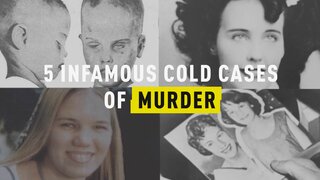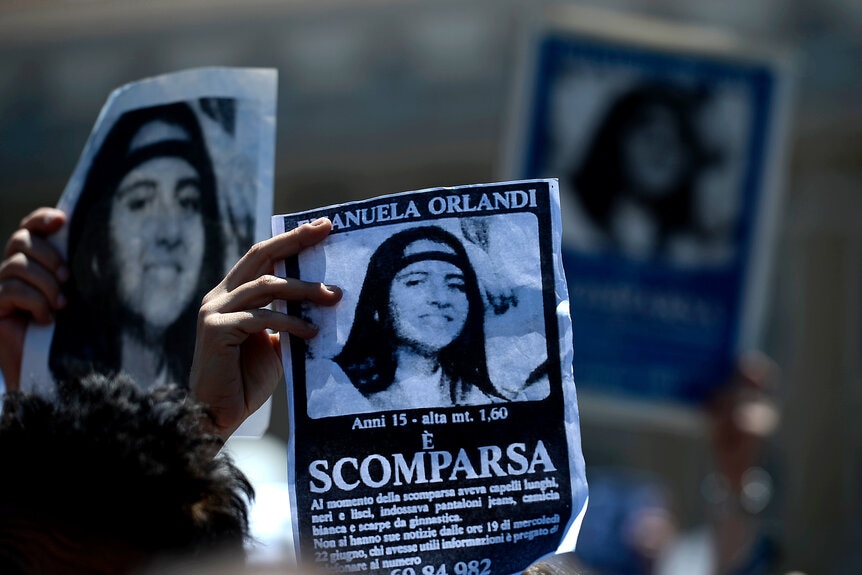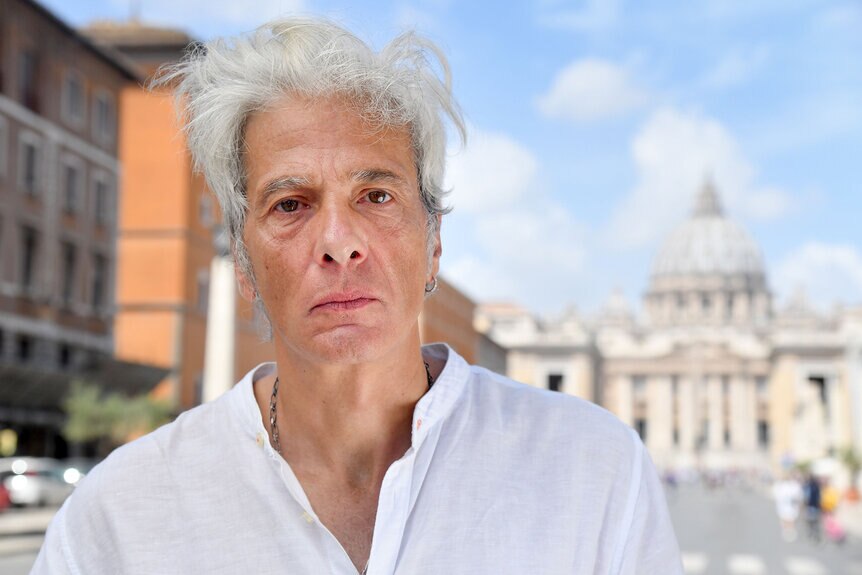Create a free profile to get unlimited access to exclusive videos, breaking news, sweepstakes, and more!
Understanding The Mysterious 1983 Disappearance Of Emanuela Orlandi
In 1983, 15-year-old Emanuela Orlandi went missing while on her way home, igniting a decades-long investigation into her alleged kidnapping.

The 1983 disappearance of Emanuela Orlandi has all the makings of a Dan Brown novel. Theories about it involve the Catholic Church, ancient tombs, and the Italian mafia.
However, unlike Dan Brown’s books, Emanuela’s story doesn’t have a neat and tidy ending. It’s been nearly 40 years since the 15-year-old disappeared, and investigators have yet to find the teen dead or alive.
For a time, the Orlandi family had hoped that they'd be reunited with their daughter, who went missing while on her way home from music practice in Rome on June 22, 1983.
After all, the Orlandis had received countless tips from members of the public and they seemed to have the support of powerful people, including the Catholic Church, which they had served for more than 100 years.
Pope John Paul II mentioned Emanuela in his public prayers, mentioning her plight for the first time 12 days after her disappearance. In one of many messages of support, the Pope said that he was addressing those who took the young girl and asked that she be returned to her family.
Abductors Make An Offer To The Pope
It would later come out that multiple individuals had claimed responsibility for her abduction in a message to the Vatican and Pope John Paul II. According to the New York Times, the group had asked that assassin Mehmet Ali Agca, who made a failed attempt to kill the pope in 1981, be released by July 20. In exchange, Emanuela would be freed.
However, if Agca wasn’t released by then, they’d kill Emanuela. As Emanuela’s sister Natalina Orlandi said in Netflix's new documentary “Vatican Girl,” “I was very brutal in that moment. I said, ‘If this is about Ali Agca, we’re never going to see Emanuela again.’ Because this was much bigger than us. And you feel completely powerless.”
The group later offered evidence that they had Emanuela by leading the Italian newspaper Agenzia Nazionale Stampa Associata (ANSA) to a package hidden in Rome, which contained the girl’s school ID and a message that read “With much affection, your Emanuela.”
Still, the Orlandi family attorney publicly asked the abductors for proof of life.
Three days before July 20, the abductors led ANSA journalists to another package, this time containing an audio recording of a young girl in duress, though it couldn’t be confirmed as Emanuela.
The deadline passed and there was no news of Emanuela’s whereabouts, though the New York Times reported in September that the group said they considered “the adversary operation of Vatican citizen Emanuela Orlandi closed in all aspects.''
In coordination with bankruptcy lawyer Gennaro Egidio, Emanuela’s father Ercole Orlandi issued a statement asking for compassion.
''If our dear, adored Emanuela is dead, as could be assumed from your last message of Sept. 4, and thus the 'Orlandi digression' is closed, tell us the place to find our Emanuela, so that on our knees we can pray for her, near her,” Ercole read to reporters.
Despite Ercole’s pleas, Emanuela was never found.
The Case Is Reopened After Woman Accuses Archbishop
Then, in 2008, police confirmed they had reopened the investigation into Emanuela’s disappearance because of claims made by Sabrina Minardi, the girlfriend of slain mobster Enrico De Pedis, according to The Guardian. She alleged that American Archbishop Paul Marcinkus had taken part in Emanuela’s kidnapping.
The tip was leaked to the public, prompting a response from then-Vatican spokesperson the Rev. Federico Lombardi, who described Minardi as a “highly dubious” source, according to the New York Times.
Nonetheless, the claims were investigated, as Marcinkus, a former president of the Vatican Bank, had ties to multiple controversial figures, including Banco Ambrosiano financier Roberto Calvi, who was found hanged under a London bridge in 1982.
The Banco Ambrosiano, of which the Vatican Bank was a main shareholder, had collapsed just months prior to Calvi’s death. The bank had owed at least $250 million, and it had to be bailed out by other Italian banks, according to the New York Times.
Calvi’s death was initially deemed a suicide, but British authorities later ruled it was a murder. Four men and one woman were charged in his death in 2003, but they were all acquitted in 2007, a judge having decided that there wasn’t enough evidence to convict, according to The Guardian.
In 1990, after Calvi’s death and the bank’s collapse —according to the Washington Post, the Vatican had paid “$244 million to creditors of the Ambrosiano bank in what it called ‘recognition of moral involvement’ in the bank's collapse” — Marcinkus resigned and moved to the United States. He died in 2006.
Mobster’s Crypt Is Opened In Renewed Search Efforts
Rumors of the Vatican’s involvement were given further credence in the eyes of the public when, in 2012, Italian police opened a crypt in the Vatican where Minardi’s slain boyfriend De Pedis had been laid to rest— a controversial burial place considering De Pedis was a criminal. According to the New York Times, the tomb contained De Pedis’ bones, in addition to hundreds more.
Forensic DNA results later confirmed that none of the bones belonged to Emanuela, but over the next two years, investigators would test even more bones in ossuaries — burial places where bones are kept — throughout Vatican City. Again, none were confirmed as belonging to Emanuela.
In 2019, the Teutonic Cemetery — adjacent to St. Peter’s Basilica and containing the remains of Germanic people — was searched, but the findings yielded more questions than answers. According to the New York Times, there weren’t even the remains of two princesses who were supposed to be placed there after they died in the mid-19th century.
The Vatican later stated that their records indicated the tomb had possibly been cleared out when they did construction in the ‘60s and ‘70s.
Vatican insiders later told Emanuela’s brother Pietro Orlandi that there were more ossuaries near the Teutonic Cemetery, located under a trapdoor. The Vatican gave the Orlandis permission to search these tombs, though the Vatican’s Communication Director Andrea Tornielli told Italian newspaper Osservatore Romano, according to the New York Times, that it was “certainly not, as has been said, an admission on the part of the Vatican of a possible involvement in hiding a corpse.”
According to the Catholic News Agency, the Vatican confirmed in July 2019 that the bones found under the trapdoor all dated back to the 20th century.
The Orlandis Demand Justice
To this day, the Orlandi family, as well as a majority of the Italian public, believes that the Vatican knows more about Emanuela’s fate than they've previously shared.
"The only thing I'm sure of is that they know the truth," Pietro Orlandi said in "Vatican Girl." "They know what happened that day. Now, I'm asking them to speak that truth because it's about time they did. Too many years have gone by."
The Vatican declined to be interviewed for the series, and according to the Catholic News Agency, they officially closed the investigation into Emanuela's disappearance in 2020.
Pietro Orlandi noted that his mother is 92 now and he hopes that she's able to lay a flower on her daughter's grave before she dies.
"We will never stop looking for her," he said.



























